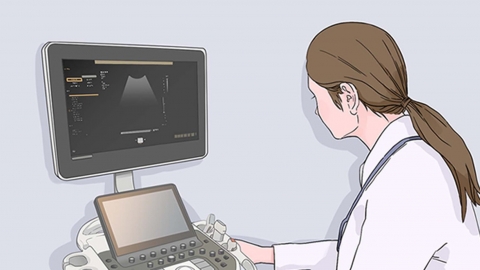What issues can a color ultrasound of the liver detect?
Under normal circumstances, color Doppler ultrasound of the liver is currently a relatively basic imaging examination method for the liver. It can detect abnormalities in liver shape and size, abnormal liver echogenicity, space-occupying lesions in the liver, intrahepatic bile duct dilation or stones, and abnormal liver blood flow. Specific analyses are as follows:

1. Abnormalities in liver shape and size
Color Doppler ultrasound of the liver can clearly display the size and shape of the liver, helping physicians determine whether there are abnormalities such as hepatomegaly or liver shrinkage. Hepatomegaly may be associated with diseases such as hepatitis and hepatic congestion, while liver shrinkage may be seen in cirrhosis.
2. Abnormal liver echogenicity
Color Doppler ultrasound can observe the echogenicity of the liver; normal liver echogenicity is uniform, while diseased livers may show enhanced, reduced, or uneven echogenicity. These echogenic abnormalities may be related to liver diseases such as fatty liver, cirrhosis, and liver cancer.
3. Space-occupying lesions in the liver
Color Doppler ultrasound can detect space-occupying lesions in the liver, such as hepatic cysts, hepatic hemangiomas, and liver cancer. These lesions typically appear on color Doppler ultrasound as abnormal echo areas or hypoechoic regions, which help physicians make preliminary judgments about the nature of the lesions.
4. Intrahepatic bile duct dilation or stones
Color Doppler ultrasound of the liver can display the structure of the intrahepatic bile ducts, helping physicians determine whether there are abnormalities such as intrahepatic bile duct dilation or stones. Intrahepatic bile duct dilation may be associated with diseases such as bile duct stones; bile duct stones may cause symptoms such as cholangitis and jaundice.
5. Abnormal liver blood flow
Color Doppler ultrasound can observe the blood flow in the liver, such as the velocity and direction of blood flow in the hepatic artery, portal vein, and hepatic veins. Abnormal liver blood flow may be associated with diseases such as portal hypertension, hepatic artery stenosis, and hepatic vein thrombosis.
Although color Doppler ultrasound of the liver can detect various liver-related issues, the results need to be analyzed comprehensively with clinical symptoms, laboratory tests, and other data. For some atypical lesions or cases requiring further definitive diagnosis, further enhanced CT, MRI, or other examinations may be necessary.
References:
[1] Mao Nan, Lu Guannan. The value of contrast-enhanced ultrasound combined with color Doppler ultrasound in differential diagnosis of primary and metastatic liver cancer [J]. Chinese Medical Journal Today, 2021, 28(15): 155-158.
[2] Guo Yongze, Li Yafei, Yan Huanan. Understanding liver disease examinations [J]. Popular Health, 2020, (07): 34-35.








